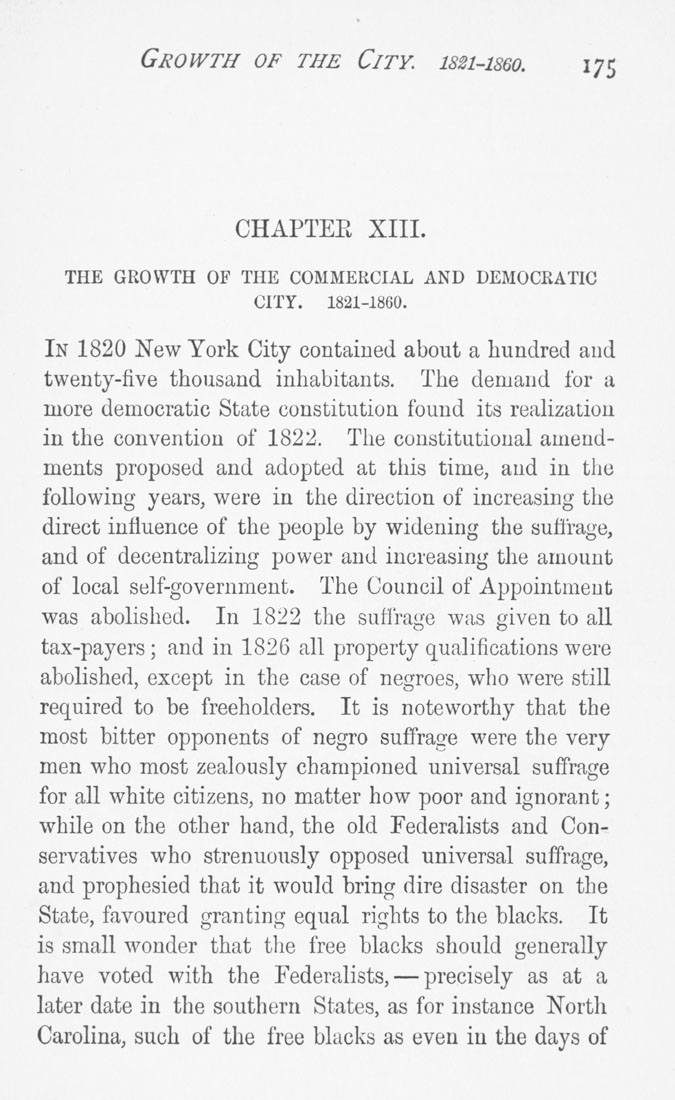Growth of the City, mi-mo.
CHAPTEE XIIL
THE GROWTH OF THE COMMERCIAL AND DEMOCRATIC
CITY. 1821-1860.
In 1820 New York City contained about a hundred and
twenty-five thousand inhabitants. The demand for a
more democratic State constitution found its realization
in the convention of 1822. The constitutional amend¬
ments proposed and adopted at this time, and in the
following years, were in the direction of increasing the
direct influence of the people by widening the suffrage,
and of decentralizing power and increasing the amount
of local self-government. The Council of Appointment
was abolished. In 1822 the suffrage was given to all
tax-payers; and in 1826 all property qualifications were
abolished, except in the case of negroes, who were still
required to be freeholders. It is noteworthy that the
most bitter opponents of negro suffrage were the very
men who most zealously championed universal suffrage
for all white citizens, no matter how poor and ignorant;
while on the other hand, the old Federalists and Con¬
servatives who strenuously opposed universal suffrage,
and prophesied that it would bring dire disaster on the
State, favoured granting equal rights to the blacks. It
is small wonder that the free blacks should generally
have voted with the Federalists, — precisely as at a
later date in the southern States, as for instance North
Carolina, such of the free blacks as even in the days of
|








